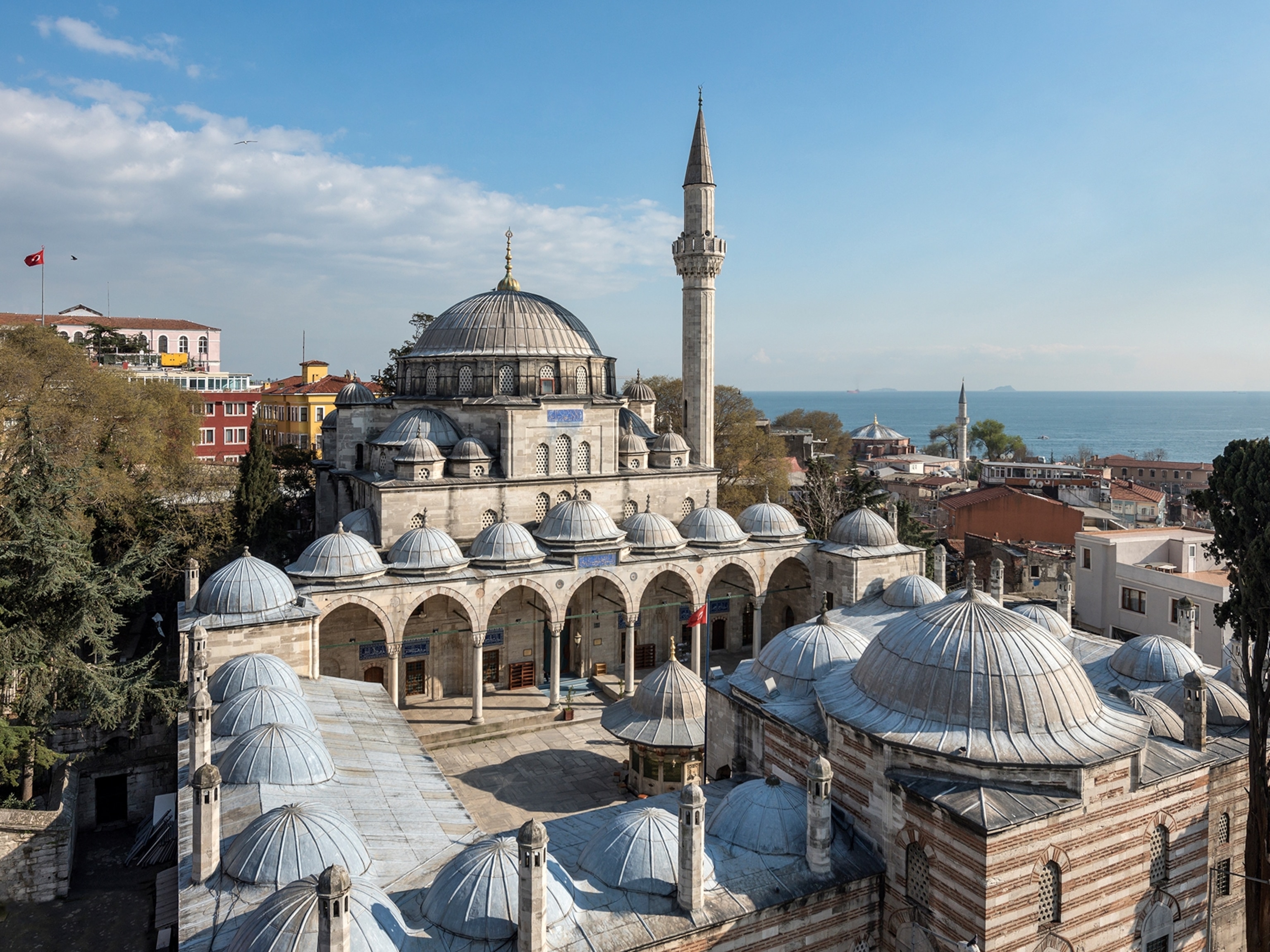
After 450 Years, Archaeologists Still Hunting for Magnificent Sultan’s Heart
Was the Ottoman sultan's heart buried on a battlefield nearly 450 years ago? Archaeologists are trying to find out.
On a rainy day in February, a black Subaru purrs along a country road through the sodden farmland east of Pécs, in rural southern Hungary.
"Back in Süleyman's day, all this would have been much more heavily wooded," says Norbert Pap, a professor of political geography at the nearby University of Pécs. "Oak forests mainly, broken up with meadows and cornfields and vineyards, although as you draw nearer to Szigetvár the land opened up further and became more marshy."
We were on our way to the fortress at Szigetvár, following an old road that was around in the time of the great Turkish sultan Süleyman the Magnificent and that, for as long as anyone can remember, has been known colloquially as Turbek Road.
In the summer of 1566, Szigetvár was the site of a bloody siege that French diplomat Cardinal Richelieu would later call "the battle that saved civilization." For five desperate weeks Szigetvár castle, the garrison of the hopelessly outnumbered forces of the Austrian Empire, held off an advancing army of more than 100,000 Ottoman troops led by Süleyman, a wily, gray-bearded veteran on his 13th military campaign.
The sultan's ultimate goal was Vienna. To capture the Habsburg capital, known as "the Golden Apple," would have been the crowning achievement of his long and brilliant reign. But it wasn't to be. As he marched through southern Hungary, he found his path blocked by an indomitable Croatian nobleman named Miklós Zrínyi, who held the fortress at Szigetvár and refused to surrender.
Zrínyi and his men put up a heroic fight, and when at last they could hold out no longer, they galloped out of the castle with suicidal élan on the morning of September 8 in one of history's great death-and-glory cavalry charges. None survived, but their weeks of bitter resistance cost the Turks more than 20,000 men and stopped their march to Vienna in its tracks. More than a century would pass before the Ottomans would try to capture Vienna again.
The night before the castle fell, the ailing sultan died in his tent, two months shy of his 72nd birthday. Although the sultan's body was taken to Constantinople for burial, it was said that his heart remained behind in Hungary, buried with his other organs in a golden casket beneath the campaign tent in which he died.
For the past two years, Pap has been on the trail of the lost tomb of Süleyman's heart.
"I started doing this simply because I was looking for a challenge," Pap says. Like most Hungarians he grew up hearing the story of the Siege of Szigetvár and the legend of Süleyman's lost tomb. "I wanted to see if by using an interdisciplinary approach and hard science, we couldn't solve this old mystery," he says.
His proposal to find the lost tomb fired the imagination of Turkish authorities. The discovery of the burial place of Süleyman's heart would have enormous symbolic significance at a time when Turks are rediscovering, and embracing, their old Ottoman heritage. With the 450th anniversary of Süleyman's death coming up in 2016, the Turkish government is enthusiastically funding the search.
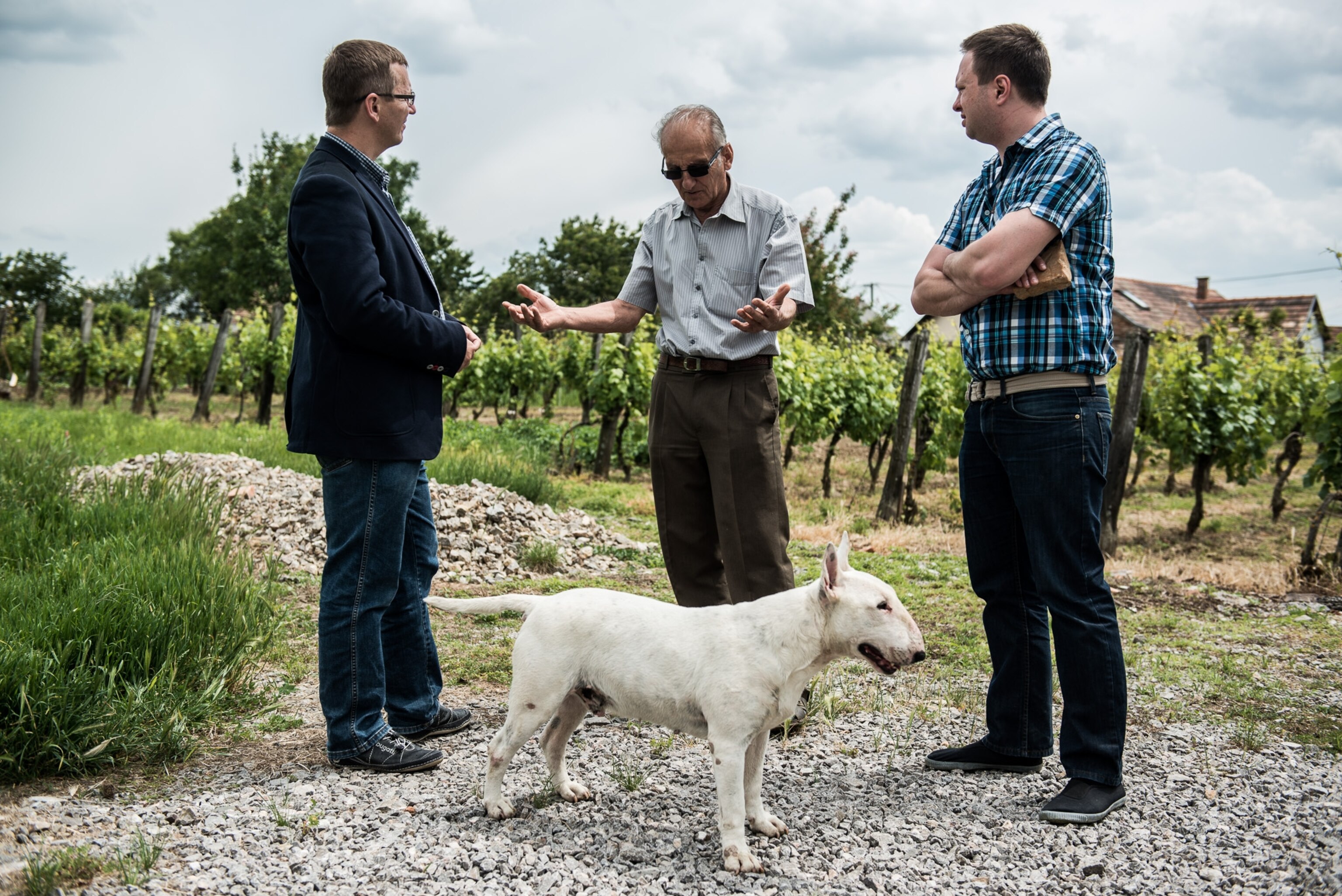
End of the Golden Age
If the Siege of Szigetvár marked a turning point in European history, it was equally pivotal in the fortunes of the Turks. Süleyman's death, after a dazzling reign of nearly half a century, brought the curtain down on what historians would come to regard as the golden age of the Ottoman Empire.
It also set the stage for an intriguing mystery that endures to this day. Fearing the effect the sultan's death would have on the army's discipline and morale, the Grand Vizier decided to keep it a secret until Süleyman's son and successor, Selim II, could be informed and take charge.
But that was not going to be an easy secret to keep. They were not back home in the closely guarded privacy of the palace, where there were ways and means to keep a body sealed away and out of sight. They were in a tent on a battlefield in Hungary, surrounded by marshland. It was late summer. The weather was warm, and there were a lot of bugs. Corpses don't keep well such conditions.
As for the crown prince, he was more than a thousand miles away, governing a province in Anatolia. It could take weeks to get a message to him, and more weeks for him to travel back and take command of his late father's army.
Legend has it that, forced by circumstances, the Grand Vizier broke with Islamic tradition and had the sultan's body secretly embalmed—in fine storybook style, even going so far as to have the sultan's physician and the embalmers strangled to seal their lips. The secret preserved, along with the body, the Grand Vizier spent the next seven weeks keeping up appearances by issuing orders on Süleyman's behalf, telling all comers that His Highness was feeling poorly and would be receiving no visitors.
Süleyman's body eventually was transported back to Constantinople to be laid to rest in the imperial mausoleum beside the Süleymaniye Mosque, while his heart may have remained buried on the battlefield. Sometime during the 1570s, a shrine was erected over the supposed burial spot. Over the next century it became a popular pilgrimage site, with a small but prosperous settlement springing up around it to serve the needs of the stream of travelers who passed through.
The settlement was marked on the old vellum maps as Turbek, a name derived from the Turkish word türbe, meaning "tomb." It had its own mosque, a tavern, an inn, public baths and a dervish cloister, enduring for nearly 120 years before being destroyed in 1693 by a vengeful Habsburg army when they drove the Turks out of Hungary. So completely did they obliterate the settlement that within a few generations its very existence had lapsed into folklore. Like something out of an Indiana Jones movie, the location of the lost town of Turbek and the tomb containing the heart of Süleyman the Magnificent remains a mystery to this day.
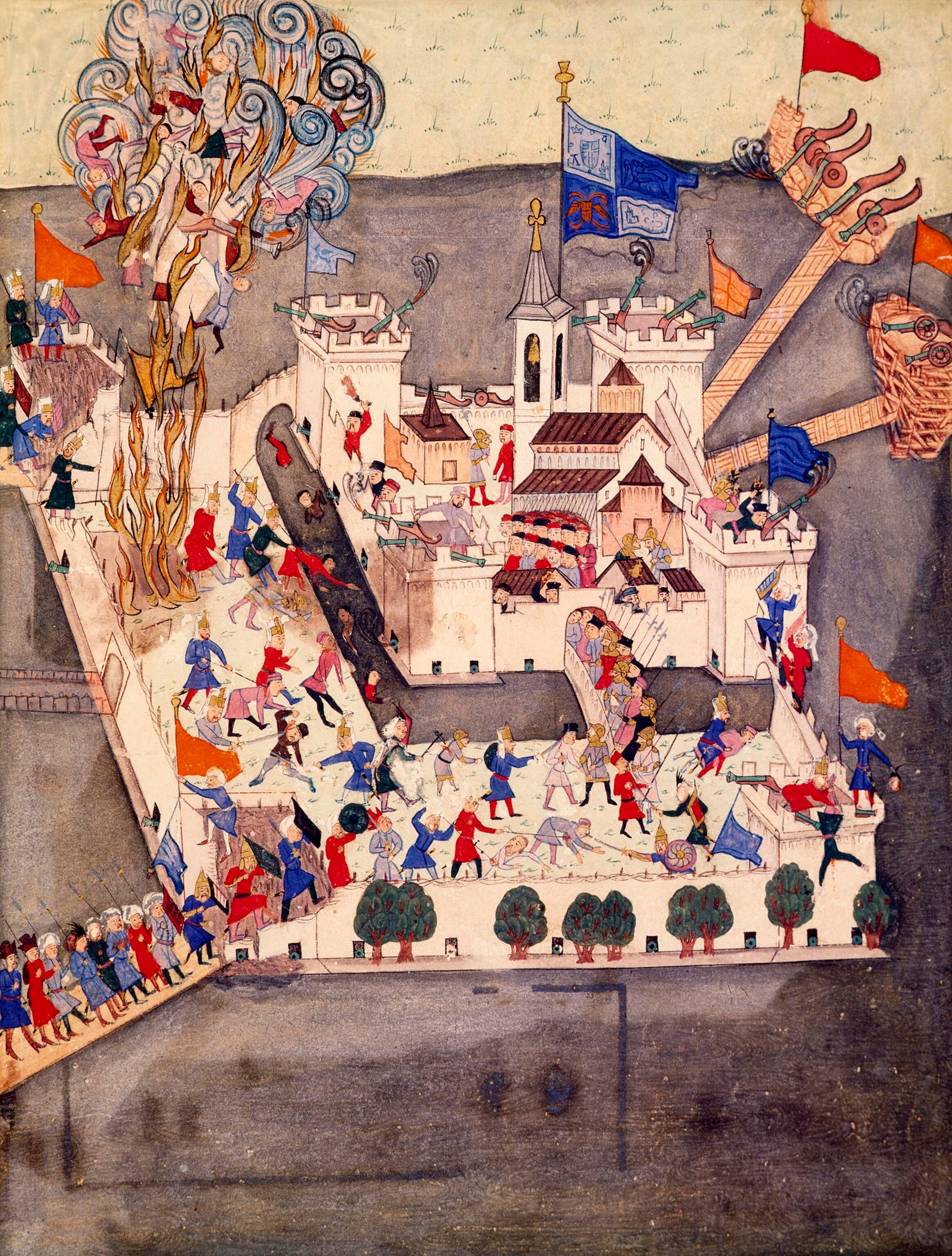
Clues to Town and Tomb
In their quest, Pap and his team pored over centuries' worth of crop and climate records, scoured old military maps, and read hundreds of musty old letters and firsthand accounts of the battle and descriptions of Turbek in Turkish, Latin, Croatian, Hungarian, and German. They took soil samples, studied the local geomorphology and used computer modeling to wind back the clock, re-create the 16th-century landscape and try to pin down some landmarks that could point to where Süleyman's imperial tent once stood and where, if the legends are correct, the shrine would have been built.
Months of painstaking detective work led them to investigate a knoll about three miles north of Szigetvár, a place previous searchers for the tomb had never looked. There, buried beneath a patchwork of vineyards and gnarled fruit trees, they found what appear to be the ruins of an old Ottoman settlement—possibly Turbek.
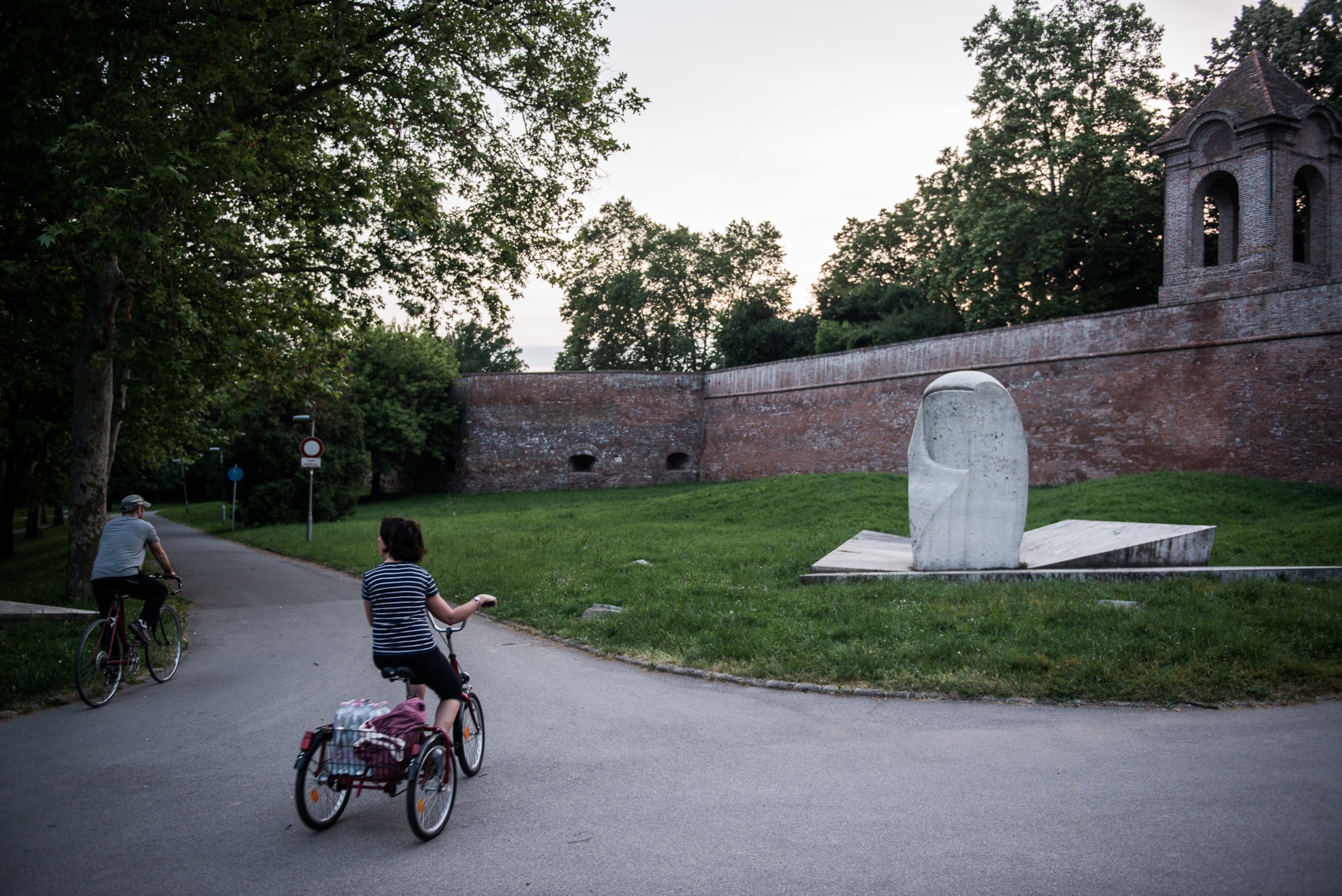
"The setting seems to match everything we know about where Turbek was supposedly sited," says Pap. Indeed, archaeological test trenches dug last summer turned up copious amounts of old Ottoman brick and tile, plus intriguing remnants of 16th-century luxury goods from the East: Persian faience, Chinese porcelain, Islamic tiles, silver coins, and glass--indications that this place, whatever it was, was clearly a place of some wealth and importance. The find is all the more remarkable because the Turks were never known to have established new settlements on the lands they conquered.
"It's absolutely unique," says Pap. "There is no known parallel to it in Ottoman occupation. One can only think that the establishment of this highly unusual settlement must have been induced by the türbe of Süleyman, which was built with commemorating, sacral, and political purposes."
If these ruins are in fact those of Turbek, the lost tomb of Süleyman the Magnificent may not be far away.
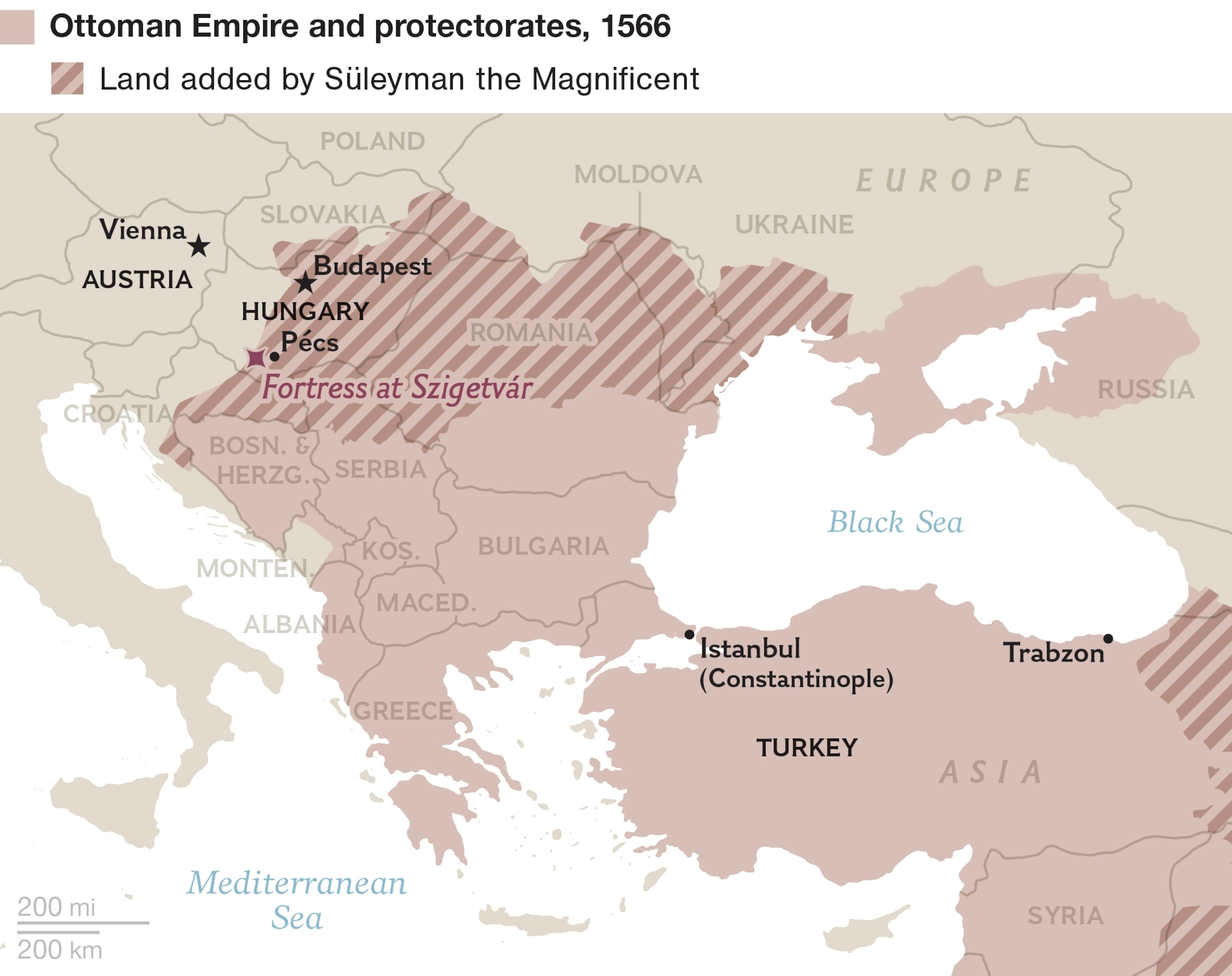
Romantic Myth
Not surprisingly, the discovery of what may be the ruins of a 16th-century Ottoman town and—just possibly—the lost tomb of a great sultan has drawn a lot of interest from many quarters. Within a few moments of our arrival in the old vineyards, a carload of police arrived. They were all business, but relaxed when they realized the visitors were just Professor Pap and his team.
"They were worried we might be treasure hunters," explained Erika Hancz, the team's archaeologist, who led last summer's excavation in the vineyard. For years there have been whispers of buried Ottoman treasure in and around the fortress at Szigetvár, although none has ever been found. The latest discovery, of what may be Turbek, has sparked fresh imaginings of a golden casket containing the sultan's heart lying beneath the earth.
"There is no golden casket," Hancz said. "That part of the story is definitely a myth, something made up during the 18th century to add a bit of glamour to the tale. If Süleyman's heart was buried here, it would have been wrapped in cloth and placed in a wooden box. And so, as far as the heart goes, there might not be much of anything for us to find."
But was the heart ever actually removed and buried? Many scholars think not—that while the shrine to the sultan's memory might have been real enough, the story that his heart was buried beneath it was merely a colorful myth concocted years later. "We are supposed to believe that the Grand Vizier allowed the sultan's body to be treated in a way notoriously not allowed by Islam?" asked Nicholas Vatin, a renowned Ottoman scholar at the Centre National de la Recherche Scientifique in Paris, who investigated the old stories and came away concluding they were just part of local folklore.
"All they had to do was bury the body—intact—and exhume it later. It had been done before, with the body of Selim I in 1520, and keeping the death of a sultan secret until the successor could be informed was fairly typical Ottoman policy in the 16th century. The romantic story of Süleyman's heart being buried in Hungary, I'm sorry to say, is just a myth," Vatin said.
Istanbul University's Günhan Börekçi concurs. What the search for Süleyman's heart boils down to today, he says, is a combination of the Hungarians' desire to develop Szigetvár as a tourist destination and nostalgia in Turkey for the Ottoman Empire's golden—and partly mythical—past.
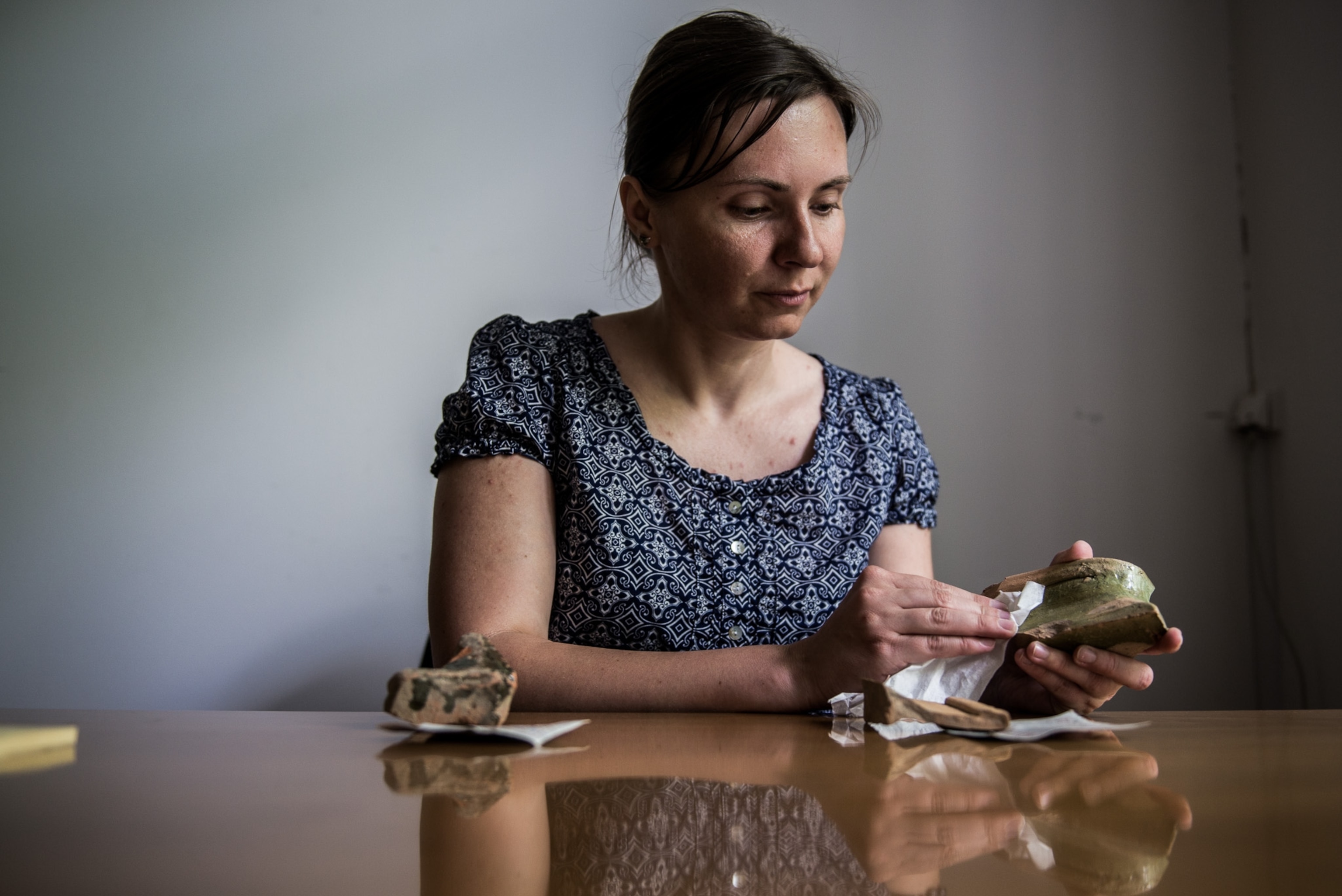
Nostalgia for the Empire
Certainly Süleyman is a bankable name these days. Among other things, he—or rather the 44-year-old actor Halit Ergenç, who plays him—is the star of an immensely popular Turkish TV series called Magnificent Century. A lavishly filmed soap opera set in the 16th-century court of Süleyman the Magnificent, it has been a runaway success since it launched in 2011, gathering more than 200 million viewers each week in 52 countries.
"My mother watches it every Wednesday night," says archaeologist Hanzc. "It is very popular in Hungary." It is popular in a lot of other countries throughout the region as well—places like Bosnia and Serbia, where the years of Ottoman rule are not otherwise nostalgically remembered; it's even a top-rated show in Greece.
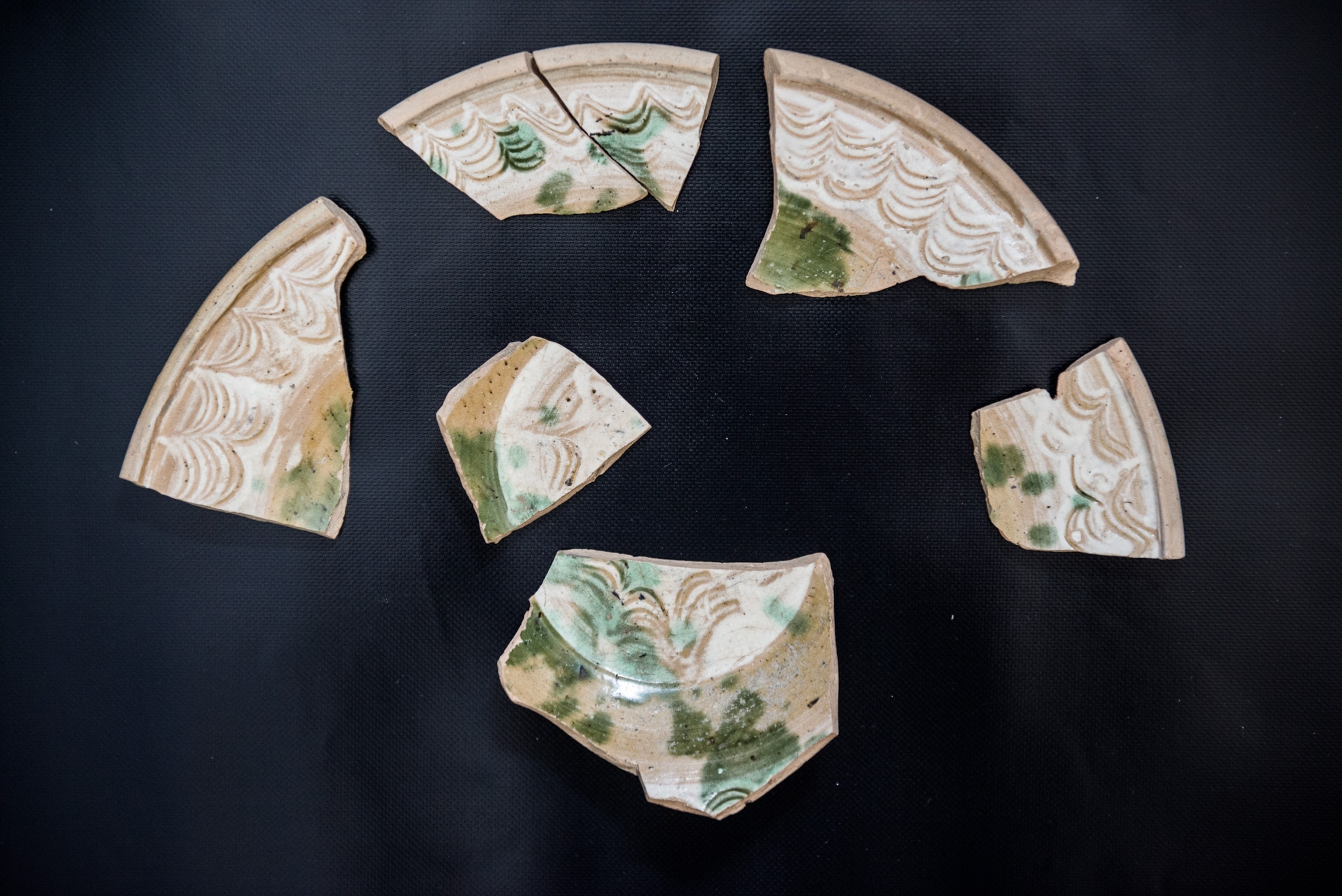
Nowhere is it more popular than in Turkey itself, where the golden years of the Ottoman Empire are embraced and celebrated across the board—in art, architecture, cuisine, couture, literature, politics, and film. Turkey's highest-grossing movie was another period drama—Conquest 1453 (2012), a glitzy re-creation of the fall of Constantinople at the hands of Sultan Mehmed II, known as Mehmed the Conqueror. In the skies Turkish Airlines is redesigning its uniforms, with leaked photos showing a return to Ottoman-style fezzes and below-the-knee skirts. Meanwhile, on the ground, the government is spending considerable sums of money on archaeological digs and on restoring Ottoman buildings and monuments abroad: Seven restoration projects are taking place in Hungary alone, including a €2 million ($3 million U.S.) grant to restore the 16th-century mosque within the walls of Szigetvár castle.
Turkish Prime Minister Recep Tayyip Erdoğan himself is an avowed admirer of Süleyman. Indeed, his critics sometimes refer to him as "Sultan Erdoğan" and his foreign policies as "neo-Ottoman." Curiously enough, Erdoğan is far from being a fan of Magnificent Century, frequently condemning the show on the grounds that its portrayal of Süleyman the Magnificent is nowhere near magnificent enough, with too much of the pleasure-seeking palace intriguer and not enough of the battle-hardened warrior-poet who, as the prime minister is fond of pointing out, spent years in the saddle, on campaign.
Hopes for Tourism
None of those campaigns were any grander or more ambitious that the one that ended at Szigetvár in 1566. Hopes are high in this part of Hungary that this surge in interest in Süleyman and the golden age of the Ottoman Empire will translate to a similar surge in tourism. The numbers of Turkish tourists in Hungary have risen by over 40 percent in the past few years, and shops and businesses in the otherwise fading farm town of Szigetvár would love to get a slice of that action.
Already €1 million has been earmarked for a new visitor center at the Szigetvár castle, and there is talk of five-star hotels. The town already boasts a Turkish-Hungarian Friendship Park commemorating the battle at Szigetvár, with enormous sculptures of the two foes—Süleyman and Zrínyi, side by side, rather than in conflict—and a shrine to Süleyman containing soil from his birthplace, Trebizond, in eastern Turkey.
"Süleyman is the most popular Ottoman sultan, known everywhere in the world, and such an association of Szigetvár with his heart [and] tomb would attract, no doubt, many Turkish tourists, as well as those from other countries and regions," says Börekçi. "For Muslim Turks, such a discovery would mean so much. Süleyman is considered one of the greatest caliphs in Islamic history; thus, they would consider his tomb as another pilgrimage site. You should see how many people visit Süleyman's mausoleum in Istanbul today."
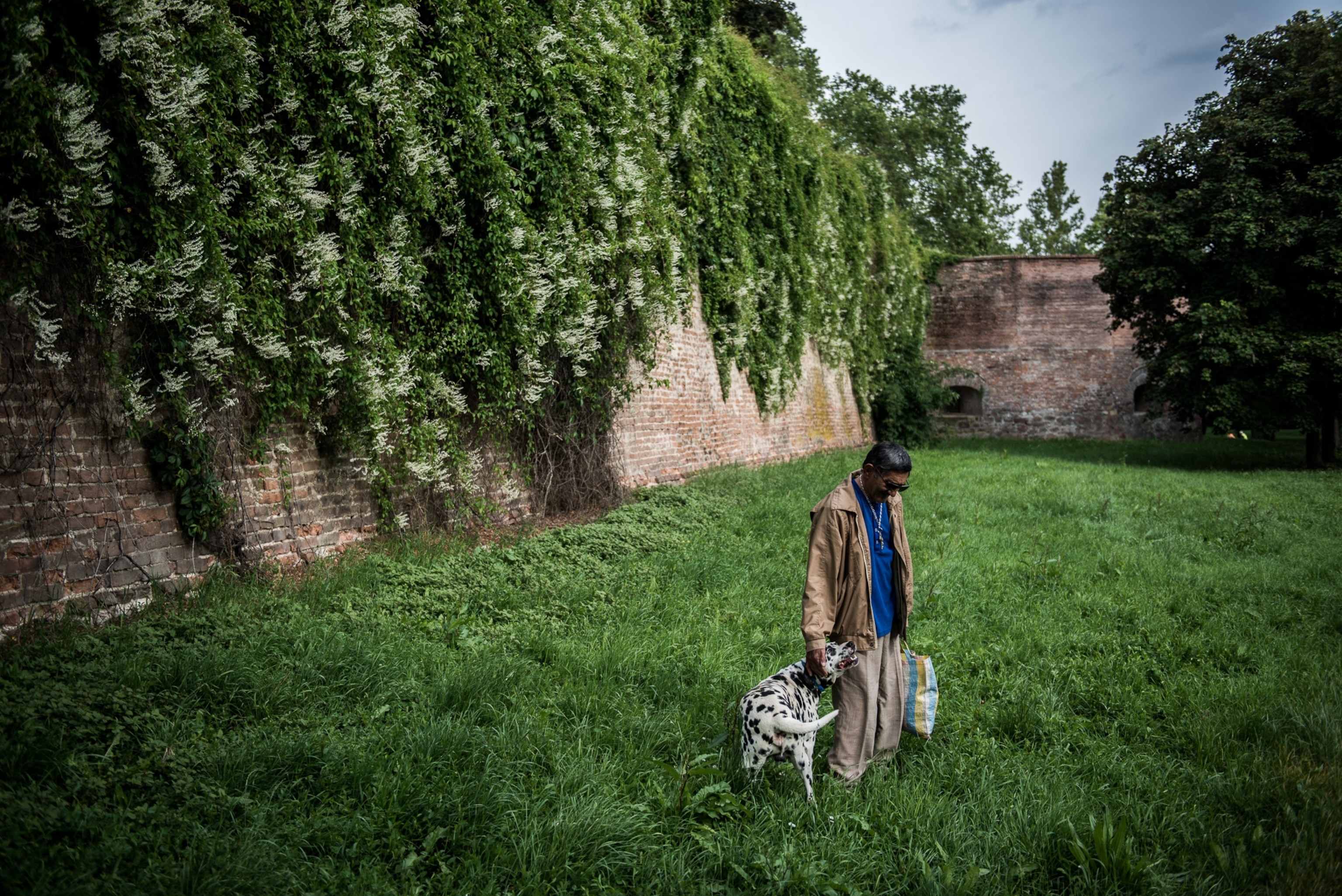
Finding a few old Ottoman bricks—even a lot of old Ottoman bricks—and pinning a name to them are two different things. Intriguing though the ruins are, they may not have anything to do with Süleyman's tomb. Indeed, long-standing local tradition has it that Süleyman's tomb stood on ground now occupied by an old Catholic church. Built in the early years of the 18th century, the crumbling ochre-colored church sits in muddy farmland about three-quarters of a mile down the slope from the vineyards where Pap and his team found the ruins.
A plaque on the front of the church, put up in 1916, categorically states that this was the site of Süleyman's tomb, although so far no ruins have been found on the church grounds. Archaeological test trenches have drawn a blank.
"The claim that the tomb was beneath the church was made purely for political reasons during World War I, at a time when Hungary and Turkey were close friends and allies," says Pap. "The locals wanted to demonstrate solidarity with the Turks, a sense of shared history."
Still, a century of local tradition is hard to shake. The Turkish government in particular is convinced that there must be something more to the story of the church than just a few obliging locals telling pleasant fictions to their allies in wartime, and is pressing Pap and his team to concentrate their efforts there. Even if the ruins on the hilltop are indeed Turbek, it is entirely possible that Süleyman's tomb was located down the slope from the town, three-quarters of a mile away.
"They are putting up the money, so we will certainly dig there some more if they want us to," says Pap, although his and his team's own hearts are set more on the ruins they have discovered up the hill.

Tantalizing Traces
To find more evidence about the site, Pap and his team have been sifting through mountains of old documents, letters, maps, and paintings, and coupling their archival research with hard science and good old-fashioned footwork.
The evidence they've found thus far is certainly tantalizing. Newly discovered letters written by a German spy in the 1570s mention the sultan's heart being buried on the site—by far the earliest known reference to the tale. Contemporary accounts of Turbek describe it as a place of vineyards and fruit trees and cornfields—which is consistent with computer modeling of 16th-century crop patterns and land use for the hilltop where the ruins were found.
"There were not that many places around where these crops all come together," says Zita Bognar, the team's geomorphologist, who has spent the past two years analyzing old maps, historic land use, and topographical changes in the landscapes around Szigetvár. "Down by where the church is was all marshy then."
Then there is the etching of Prince Paul Esterhazy, discovered by the team's archivist Máté Kitanics. Drawn around the time Szigetvár was retaken by the Habsburgs, it shows the Hungarian nobleman astride a prancing charger near the castle walls with a town labeled "Turbek" sitting—significantly—atop a hill in the background, in distance and direction not at all unlike the setting where the ruins are found today.
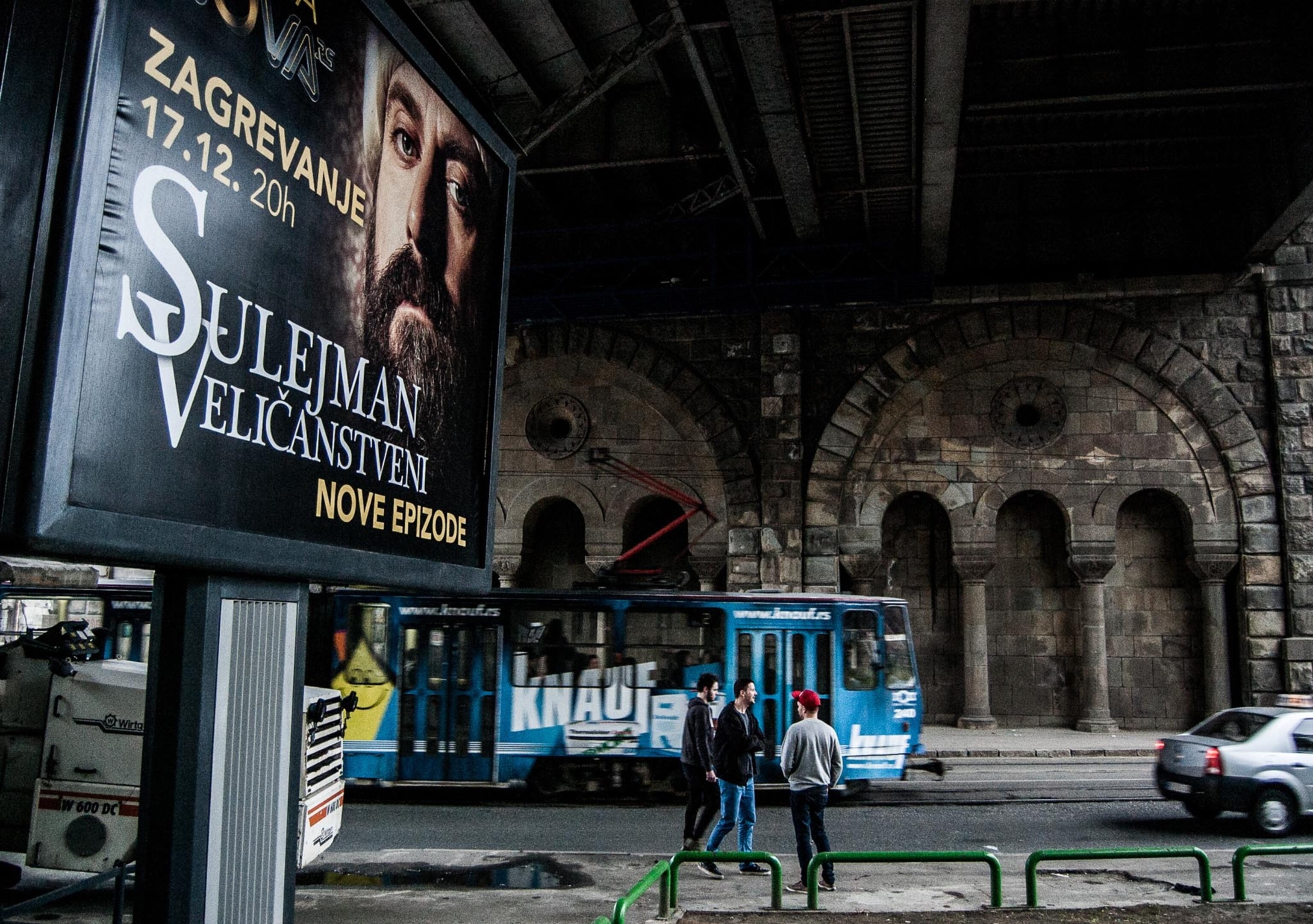
Still more tantalizing evidence that these hilltop ruins may be the lost Turbek comes from firsthand accounts of the Siege of Szigetvár, which say that Süleyman could see the castle from his tent—so today somebody standing by the shrine, supposedly built where Süleyman's tent once stood, should have the same view. And sure enough, face south and gaze out between the fruit trees, and you can easily spot Szigetvár castle in the distance.
And that distance, a bit under three miles, is just about right, says Kitanics, who has sifted through hundreds of old letters and accounts of the battle in his search for the tomb. "They all agree that the sultan's tent was located about an hour's walk from the castle, safely out of range of the cannons on the ramparts," he says. "I have hiked from here to Szigetvár several times, and it always takes just about exactly an hour." The old church, on the other hand, by tradition the favored location of the shrine, is only a 35-minute walk from the castle, he says. "And you can't see the castle from there."
Finally, there is a sense of logic in having this hilltop be the site of Süleyman's last encampment. The summer of 1566, when the Siege of Szigetvár took place, was one of the rainiest in years. In such a flat, dreary, rain-sodden landscape of marsh and floodplain, the sultan surely would have claimed this elevated bit of ground, away from the mud and mosquitoes, argues Pap, and with a good view of the town and castle he was planning to conquer. "This would have been the best spot. Why wouldn't he take it for himself?"
Why wouldn't he indeed? But whether he left his heart there is likely to remain a mystery. The only way to really prove it one way or the other, says Istanbul University's Börekçi, would be to open the imperial mausoleum in Istanbul and do an autopsy on Süleyman's body to see if his heart is still there. "But such a thing would be unthinkable. The sultans' bodies are so sacred that nobody would dare to touch them."



